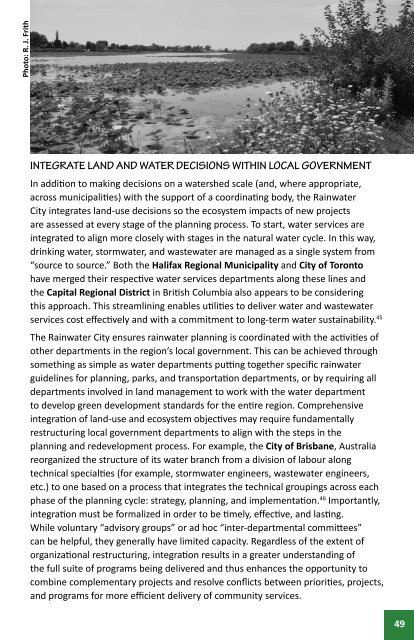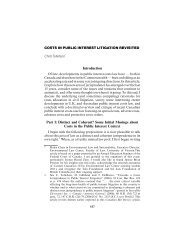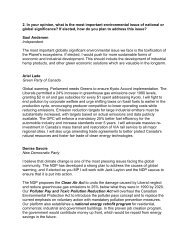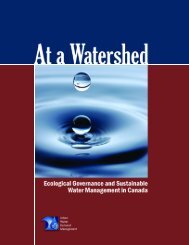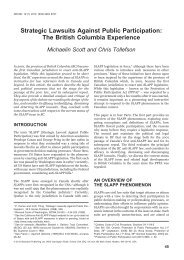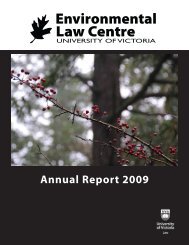Peeling back the Pavement - POLIS Water Sustainability Project
Peeling back the Pavement - POLIS Water Sustainability Project
Peeling back the Pavement - POLIS Water Sustainability Project
You also want an ePaper? Increase the reach of your titles
YUMPU automatically turns print PDFs into web optimized ePapers that Google loves.
Photo: R. J. Frith<br />
Integrate Land and <strong>Water</strong> Decisions within Local Government<br />
In addition to making decisions on a watershed scale (and, where appropriate,<br />
across municipalities) with <strong>the</strong> support of a coordinating body, <strong>the</strong> Rainwater<br />
City integrates land-use decisions so <strong>the</strong> ecosystem impacts of new projects<br />
are assessed at every stage of <strong>the</strong> planning process. To start, water services are<br />
integrated to align more closely with stages in <strong>the</strong> natural water cycle. In this way,<br />
drinking water, stormwater, and wastewater are managed as a single system from<br />
“source to source.” Both <strong>the</strong> Halifax Regional Municipality and City of Toronto<br />
have merged <strong>the</strong>ir respective water services departments along <strong>the</strong>se lines and<br />
<strong>the</strong> Capital Regional District in British Columbia also appears to be considering<br />
this approach. This streamlining enables utilities to deliver water and wastewater<br />
services cost effectively and with a commitment to long-term water sustainability. 45<br />
The Rainwater City ensures rainwater planning is coordinated with <strong>the</strong> activities of<br />
o<strong>the</strong>r departments in <strong>the</strong> region’s local government. This can be achieved through<br />
something as simple as water departments putting toge<strong>the</strong>r specific rainwater<br />
guidelines for planning, parks, and transportation departments, or by requiring all<br />
departments involved in land management to work with <strong>the</strong> water department<br />
to develop green development standards for <strong>the</strong> entire region. Comprehensive<br />
integration of land-use and ecosystem objectives may require fundamentally<br />
restructuring local government departments to align with <strong>the</strong> steps in <strong>the</strong><br />
planning and redevelopment process. For example, <strong>the</strong> City of Brisbane, Australia<br />
reorganized <strong>the</strong> structure of its water branch from a division of labour along<br />
technical specialties (for example, stormwater engineers, wastewater engineers,<br />
etc.) to one based on a process that integrates <strong>the</strong> technical groupings across each<br />
phase of <strong>the</strong> planning cycle: strategy, planning, and implementation. 46 Importantly,<br />
integration must be formalized in order to be timely, effective, and lasting.<br />
While voluntary “advisory groups” or ad hoc “inter-departmental committees”<br />
can be helpful, <strong>the</strong>y generally have limited capacity. Regardless of <strong>the</strong> extent of<br />
organizational restructuring, integration results in a greater understanding of<br />
<strong>the</strong> full suite of programs being delivered and thus enhances <strong>the</strong> opportunity to<br />
combine complementary projects and resolve conflicts between priorities, projects,<br />
and programs for more efficient delivery of community services.<br />
49


